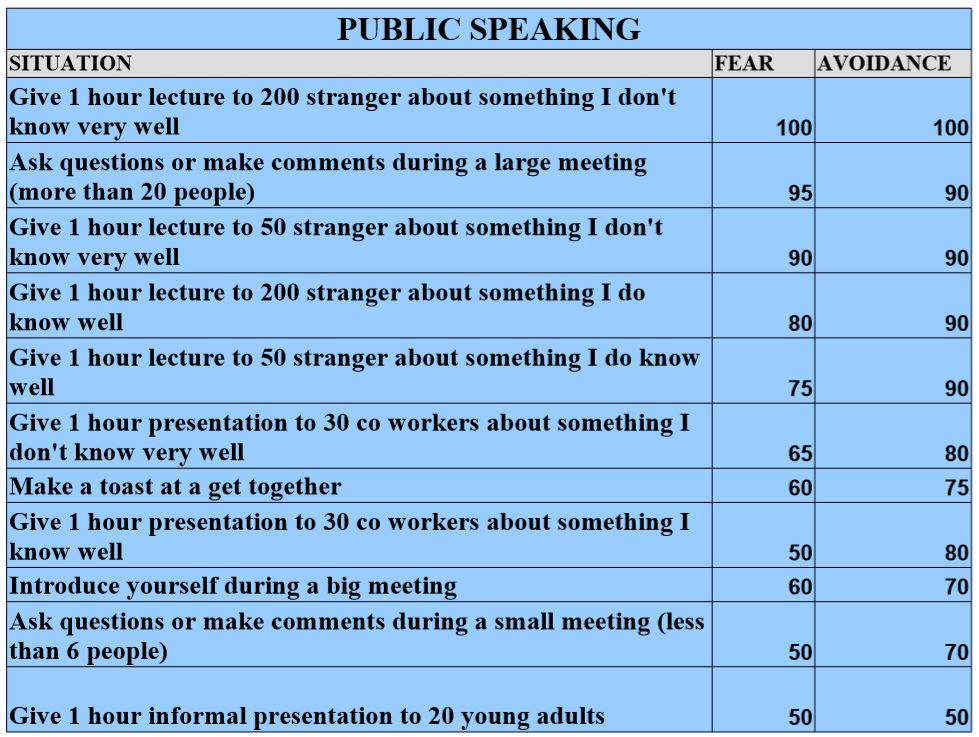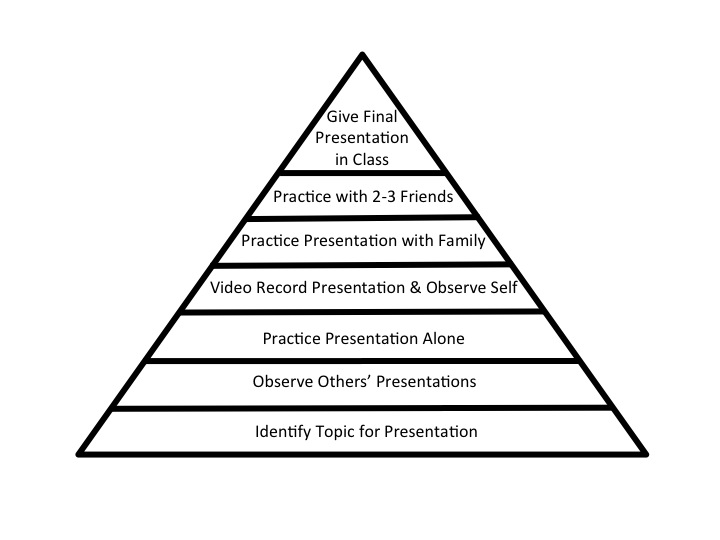Now that we have covered all of the various types of social situations, you will develop a situational exposure hierarchy.
Which types of social situations do you fear the most? Is it one specific theme like public speaking, small talk, or being the center of attention, or is it more general in nature (everything)?
Make a hierarchy of the different types of interactions that cause you anxiety. You want these to range from mild to extreme and be specific as possible. If the hierarchy isn’t very specific and accurate, you will have a hard time executing it.
Refer back to your self-assessment questionnaire to jog your memory.
0 – do not fear or avoid the situation, 100 – deathly afraid/avoid at all costs. You get the point.
Here are some examples of hierarchies to help you in making your own:


Now, make your own. Use this Fear and Avoidance Hierarchy Worksheet to help you.
What do you do with this situational hierarchy next? Implement it into your treatment plan. You understand how your anxiety works, you know how to combat it with cognitive thinking strategies, and now you will use your hierarchy to plan exposures. Exposure practices are probably the most important part in overcoming your social anxiety. This is where you learnt that you really have nothing to fear. Those terrible anxiety provoking beliefs that you have are not real.
Some things to keep in mind when executing your exposure practices.
Be flexible – stick to your hierarchy, but if you want to switch things up as you progress, that’s fine. As you progress and get experience with exposures, you will change your future practices based on those results.
Plan your exposure practices in weekly increments. Decide what you will do that week and do it!
Start with the mild to moderate (low) anxiety provoking exposures and work your way up over time.
Use an exposure record to help you monitor your progress and get some insights. Journals can be invaluable when looking for patterns in your behavior and thoughts. Use it to record how you are feeling before and after an exposure practice.
Also, record what happened during the exposure practice. How did it go? Were your anxious predictions and thoughts unfounded? What was your fear level before, during, and after the practice? Based on what you learned, what exposure practice do you want to take on next?
If the exposure practices are too intense for you, try situational role play or imagined exposure. Doing these exercises before doing the real thing can be a helpful stepping stone.
In imagined exposure, you use a little visualization to picture yourself in the situation. Try and picture as much detail as you can. Imagine that you are really in that situation. What do you see around you? What emotions am i feeling? What sounds and smells am i sensing? What are my thoughts? What physical sensations are you feeling? The closer you get to the real thing, the more helpful the practice will be and the easier the real exposure will become.
Once you get past doing the imagined exposure (or if aren’t really into that thing), you can try situational role-play. Ask friend(s) or family member to role play in whatever scenario you have trouble with. You can pretend they are an audience (for presentations), or that they are a stranger (for small talk), or that they are interviewing you for a job.
Step by step guide to conducting exposure to social situations
1 – Develop a situational exposure hierarchy
2 – Plan your exposure practices on a week by week basis
3 – Develop a long term exposure plan
4 – Start with easier exposure practices
5 – Increase the difficulty gradually

Pingback: Challenging Your Worst Fears – Wisdom For Life